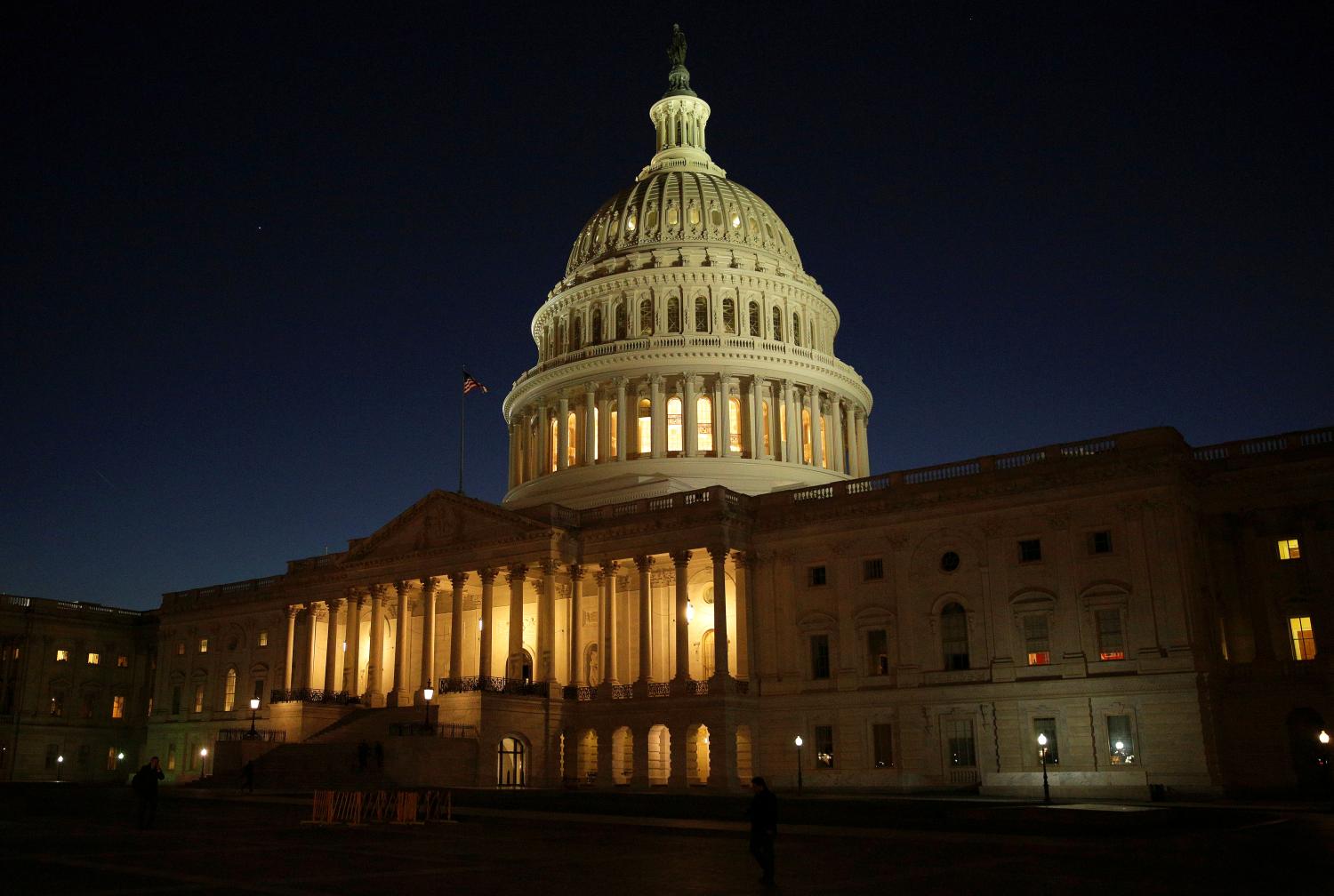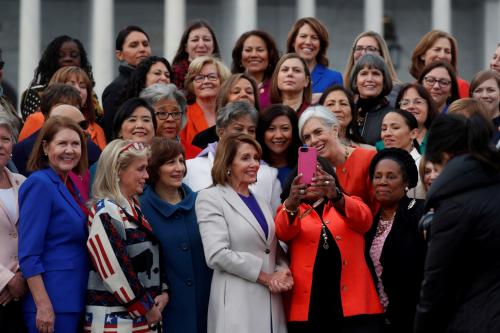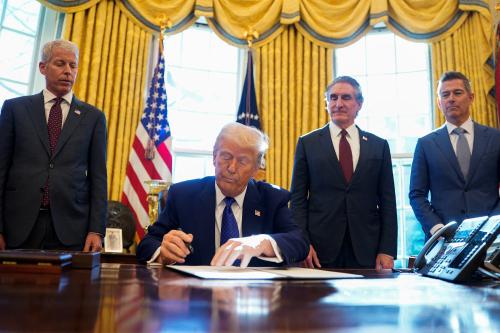Nearly six months in, President Biden’s regulatory policy is slowly coming into focus. It is ambitious. The administration has revoked many of Trump’s executive actions on regulation, repealed dozens of regulations issued over the last four years, pledged to use regulatory policy to pursue administration priorities, promised to incorporate distributional consequences into regulatory analysis, and selected an ideologically-progressive regulatory team. Biden has also ordered the Office of Management and Budget to “determine an appropriate approach” to agency guidance. It is not yet clear, however, what this means or how this administration will oversee guidance.
The term “guidance” includes a wide range of agency actions, including more familiar documents like the Centers for Disease Control and Prevention’s (CDC) pandemic guidance as well as agency white papers, “Dear Colleague” letters, frequently asked questions, policy statements, advisories, circulars, bulletins, memoranda, enforcement manuals, webinars, and press releases, among others. Agency guidance is both necessary and common. These nonbinding policy statements allow agencies to communicate with affected publics about how to comply with agency programs. They provide clarity and detail that is often helpful to (and appreciated by) regulated communities. And they give agencies a mechanism by which to quickly respond to issues as they emerge.
In recent years, agency guidance documents have become a source of concern for some and drawn the interest of reformers. Some reform proposals fall under the banner of good governance, such as proposed requirements that guidance documents should clearly disclose that they are nonbinding and that they be readily accessible on agency websites. One question that has received less attention is the role that the White House—through its regulatory review arm, the Office of Information and Regulatory Affairs (OIRA)—should play in reviewing, shaping, and otherwise overseeing agency guidance.
OIRA’s role in reviewing draft regulations has been ensconced since the Reagan years, but its review of guidance is a newer development. Since 2007, OIRA has reviewed a subset of the most significant agency guidance documents.[1] Subsequently, each president since George W. Bush has tweaked the process, scope, and in some cases the authority governing this process.[2] The result is an inexorable march toward incorporating guidance review and oversight into OIRA’s portfolio. Indeed, like it did under his predecessors, OIRA continues to review guidance under President Biden.
As the new administration evaluates its approach to guidance, there are several questions that need answering. Should this administration reaffirm OIRA’s role in reviewing agency guidance or scale it back? Should OIRA review guidance with a “lighter touch” than regulation? If so, what does that look like?
Fortunately, since OIRA was first created in 1981, scholars have had four decades to mull over the institutional implications of centralized regulatory review. In this post I build on insights from research in law, political science, and public administration to draw out the implications of extending presidential review to agency guidance documents.
Assessing the benefits and costs of OIRA review of guidance
OIRA’s many supporters are quick to point to the benefits of regulatory review. The two that are most frequently touted are improvements to the quality of regulations and coordination within the executive branch.
When agencies send a draft regulation to OIRA for review, that regulation has often been through an internal agency vetting process, but people outside of the agency have not given it close scrutiny. OIRA review ensures that rules are internally consistent and analytically sound, address alternatives, and avoid unintended consequences. OIRA also serves as a procedural check, ensuring that agencies have met key legal and process requirements. Finally, OIRA coordinates activities across the executive branch as part of its review, ensuring that new regulatory policy avoids redundancy and conflict.
These benefits of review presumably extend to guidance as well but with additional wrinkles. Critics have charged that agencies inappropriately turn to guidance, which is not subject to the Administrative Procedure Act’s notice and comment provisions, to avoid the burdensome rulemaking process. OIRA review can help ensure that this maneuvering does not occur. This mitigates potential legal risk while also depriving critics of a favorite target. Coordination is also particularly useful for many types of guidance that have cross-cutting effects like the pandemic guidance issued by federal agencies.
Of course, OIRA review is no free lunch. For regulations, OIRA’s operative executive order allots the office 90 days to review draft rules. Yet, OIRA frequently exceeds this timeframe, and critics often point to this delay as a contributor to the already-slow rulemaking process. Some research has even shown that delays in OIRA review are exacerbated when there is a vacancy in OIRA’s politically-appointed administrator position—as there is right now—and when OIRA is relatively understaffed, a somewhat chronic condition at this point. The implication for guidance is straightforward—adding OIRA review has the potential to slow the guidance process down. This is important, since a key benefit of agency guidance is its flexibility, speed, and agility.
Critics also contend that OIRA’s watchdog role might be almost too effective, leading agencies to engage in so-called “OIRA avoidance.” With respect to rulemaking, there are a number of ways agencies can do this including splitting what might be one large rule into smaller rules (to avoid triggering OIRA’s review thresholds) or pursuing approaches like adjudication that are not subject to OIRA review. This latter point is especially salient for guidance since overseers will want to avoid engaging in a game of “Whac-a-Mole” in which agencies simply shift to other, less-scrutinized policymaking tools. Fortunately, most empirical studies find that such concerns about OIRA avoidance are overblown, offering some reassurance about OIRA’s role in reviewing guidance.
Evaluating the “politicization” of OIRA review
One concern with OIRA review of rules is that it politicizes the regulatory process. For example, recent research argues that OIRA review makes agencies more responsive to the preferences of the president. Further, interest groups lobby OIRA directly. Research shows that industry groups greatly outnumber public interest groups in this process and also that these business interests can affect regulatory outcomes. Similar effects could follow from OIRA review of guidance.
Guidance is not, however, “politics-free” even in the absence of OIRA review. The topics that the most prominent guidance documents address are politically-charged. Consider, for example, guidance issued by the CDC in response to the COVID-19 pandemic. These guidance documents touch on how schools can safely reopen, when to wear a mask, and which activities fully vaccinated people can safely engage in. Despite a clear focus on public health, this is politically fraught terrain as research has shown that many elements of the pandemic are viewed through a highly partisan lens.
The notion that OIRA drives politicization misses the larger story—agencies are already inherently political by virtue of the appointees at their helm. And political appointees are likely to play a role in the writing and release of important guidance documents, whether OIRA reviews them or not. Indeed, in prior work I found that as the proportion of politically appointed managers within an agency increases, so did the issuance of guidance documents. While not necessarily causal, this pattern suggests that the guidance process is responsive to the political environment.
Finally, interest groups already lobby agencies over guidance documents. Recent work by Susan Yackee shows that interest groups perceive their lobbying influence over the guidance policy to be greater than their influence over rulemaking policy.
All of this suggests that prominent agency guidance documents are already subject to politics. Adding OIRA review on top of this adds yet another political layer. Accordingly, OIRA review of guidance may be an area where a high level of transparency is warranted and where institutional observers would do well to keep a watchful eye.
Coming to terms with presidential power
Beliefs about the proper extent of executive power and the role of the administrative state—about which reasonable people can disagree—also color the evaluation of OIRA’s guidance function. As Donald Trump’s presidency brought to light, there is an ongoing debate about the extent to which executive power should be concentrated in the hands of the president or dispersed more widely. Unquestionably, OIRA review of regulations expands presidential power; having guidance in OIRA’s portfolio augments this power even more.
In the end, whatever his beliefs about executive power, Biden is very unlikely to relinquish OIRA review of guidance altogether. Every president since Reagan has reaffirmed OIRA’s role in regulatory review, despite suggestions that Democratic presidents should dismantle it.
If OIRA guidance review is here to stay, then the Biden team should harness the benefit of experience and research to make it as effective as it can be while also limiting its potential downsides. First, since one of the primary advantages of guidance is its speed, the administration should commit to a shortened review period (i.e., less than the current 90-day review window for rules). Second, given that research indicates that business has a lobbying advantage, OIRA should commit to transparency around its lobbying meetings and take steps to ensure that all voices are heard. Third, and perhaps most importantly, OIRA’s review can improve guidance by serving as an enforcer of procedural “best practices.” Serious people are thinking about how to improve the procedures around guidance (see here, here, and here). OIRA should make sure that agencies implement those procedures.
On balance, having OIRA review guidance is a good thing. OIRA reviews those guidance documents that are likely to have large economic impacts or that are substantively important. These are precisely the types of policy documents where it is important for agencies to get things right in a policy, procedural, and political sense. OIRA review can help make that a reality.
The authors did not receive financial support from any firm or person for this article or from any firm or person with a financial or political interest in this article. They are currently not an officer, director, or board member of any organization with an interest in this article.
References
[1] Although there is no official accounting or inventory of agency guidance documents, across the federal government thousands of these documents exist. At the outset, it is worth noting that OIRA has neither the capacity nor the desire to review all these actions. Instead, OIRA review—across its many administration-specific iterations—has been confined to the fraction of documents that are considered substantively or economically significant.
[2] For the first 26 years of its existence (1981-2007), OIRA rarely—if ever—reviewed agency guidance. Indeed, Clinton-era OIRA Administrator Sally Katzen recounted that OIRA did not review guidance during her five-year tenure. That equilibrium shifted in 2007 when President George W. Bush issued an executive order extending OIRA review to cover “significant” agency guidance documents. Bush’s order was later rescinded by President Obama, although an administration memorandum clarified that OIRA “retained” the authority to review agency guidance. President Trump then issued another executive order again formally extending OIRA review to guidance documents, which President Biden revoked on his first day in office.
The Brookings Institution is committed to quality, independence, and impact.
We are supported by a diverse array of funders. In line with our values and policies, each Brookings publication represents the sole views of its author(s).








Commentary
Improving White House review of agency guidance
July 8, 2021